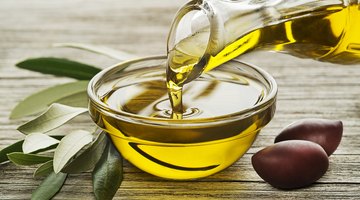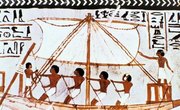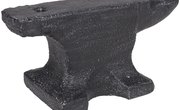As the birthplace of civilization in Europe, the colonization of ancient Greece took place during the Geometric period, which lasted from about 900 to 700 B.C. During this time, many modern elements of Greek society were formed, including active trade markets that sprung up along the seacoast, where citizens could barter for pottery, olive oil, wine and precious metals.
Olives and Olive Oil
In Ancient Greece, olive oil was not just used for cooking and for nourishment. Rather, olives and olive oil were essential component of a Greek’s daily life, especially among the wealthy. The oil was used as a cleanser, a medicine, a basis for ointments and perfumes, and a prize for the winners of the Panathenian Games, which were held every four years. As such, it was considered a valuable commodity for trade and sale with merchants from Phoenicia, Crete and Egypt. Around 600 B.C., the trade and sale of this liquid gold expanded into Russia and Romania.
Wine
Wine was another important commodity and essential element of daily life in ancient Greece. From religious celebrations to intellectual symposiums, the Greeks integrated the consumption of wine into nearly all of their social gatherings. Wine could be used to barter for metals, leather and even slaves, and evidence uncovered from ancient shipwrecks shows that the Greeks traded their wine with countries all throughout the known world.
Pottery
Ancient Greeks used pottery for everyday life, including for drinking, storage, and the transport of water, olive oil and grain. As such, pottery was a valuable product to be bought and sold during this time period, and was often exchanged for exotic raw materials that could be used by Greek craftsman. The extensive discovery of Greek pottery collections has provided archeologists with valuable insight into this ancient culture, and the pottery’s intricate painted designs shed light on the country’s many trading partners. For instance, trading with the countries of Asia Minor influenced the oriental-style paintings with flowers and vines, while Corinthian art reflected a more abstract style.
Precious Metals
In ancient Greece, precious metals, especially bronze and silver, were used to produce tools, weapons, jewelry, art, coins and elaborate drinking goblets for the wealthy. Although certain metals, such as silver and gold, could be mined or panned for in the river, other raw materials needed to produce metal-based items were not readily available in ancient Greece, necessitating long-distance trade. Metals such as iron, copper, tin, gold and silver were available for trade at marketplaces called agorai, and the coinage crafted from these raw materials led to the evolution of Greece's first monetary system.
Related Articles
References
Writer Bio
Jennifer Brozak earned her state teaching certificate in Secondary English and Communications from St. Vincent College in Latrobe, Pa., and her bachelor's degree in journalism from the University of Pittsburgh. A former high school English teacher, Jennifer enjoys writing articles about parenting and education and has contributed to Reader's Digest, Mamapedia, Shmoop and more.









